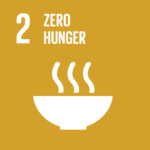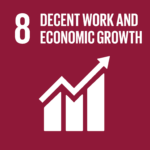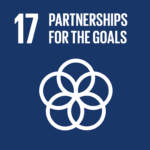Progress on the 17 Sustainable Development Goals (SDGs) remains uneven and inadequate across various segments of the population and within the five subregions of Asia and the Pacific.
According to a new report published by the Economic and Social Commission for Asia and the Pacific (ESCAP) today, gender and location remain key factors in determining levels of poverty and inequality in the region.
“While additional efforts are required across the board, granular data emphasizes the urgency of addressing inequalities that impact marginalized groups, including women, girls, rural populations and the urban poor, who continue to find themselves locked out of education and employment opportunities,” underscored United Nations Under-Secretary-General and Executive Secretary of ESCAP Armida Salsiah Alisjahbana.
RELEVANT SUSTAINABLE GOALS




“Equally, the sustained progress gap revealed between countries in special situations, especially Pacific small island developing States, and the rest of the region demands a concerted response from international, regional and national partners,” added Ms. Alisjahbana.
The Asia and the Pacific SDG Progress Report 2024 takes a closer look at groups that may be disadvantaged, focusing on how sex, urbanization, education level, age and income contribute to existing disparities and sometimes exacerbate them.
Despite overall progress in school enrolment rates, women and girls in the region continue to face considerable challenges when it comes to accessing education and employment opportunities. They have lower enrolment rates and struggle with literacy. Young women also encounter difficulties accessing labour markets, leading to higher rates of youth unemployment. Meanwhile, the challenges faced by men tend to be related to their health or personal safety. They suffer from higher rates of suicide, chronic diseases and road traffic deaths.
People living in rural areas face pronounced disadvantages, such as limited access to basic drinking water and sanitation facilities. Additionally, the lower availability of clean cooking fuels in these areas contributes to serious respiratory diseases. In general, urban areas exhibit better conditions, yet paradoxically, within these areas, the poorest boys and girls face significant hurdles in completing upper secondary education.
At its current pace, the report further highlights that the region will not achieve all 17 SDGs before 2062 – marking a significant 32-year delay. While positive steps have been taken toward eliminating poverty (Goal 1) and bolstering sustainable industry, innovation and infrastructure (Goal 9) in the region, progress in other critical areas has been more modest. Efforts towards mitigating hunger (Goal 2), enhancing health and well-being (Goal 3), ensuring the availability of clean water and sanitation (Goal 6), expanding affordable and clean energy (Goal 7) and building sustainable cities and communities (Goal 11) have been less pronounced and require heightened attention.
People living in rural areas face pronounced disadvantages, such as limited access to basic drinking water and sanitation facilities. Additionally, the lower availability of clean cooking fuels in these areas contributes to serious respiratory diseases. In general, urban areas exhibit better conditions, yet paradoxically, within these areas, the poorest boys and girls face significant hurdles in completing upper secondary education.
At its current pace, the report further highlights that the region will not achieve all 17 SDGs before 2062 – marking a significant 32-year delay. While positive steps have been taken toward eliminating poverty (Goal 1) and bolstering sustainable industry, innovation and infrastructure (Goal 9) in the region, progress in other critical areas has been more modest. Efforts towards mitigating hunger (Goal 2), enhancing health and well-being (Goal 3), ensuring the availability of clean water and sanitation (Goal 6), expanding affordable and clean energy (Goal 7) and building sustainable cities and communities (Goal 11) have been less pronounced and require heightened attention.
An annual publication produced by ESCAP, the Asia and the Pacific SDG Progress Report uses the latest data for global SDG indicators to determine where additional effort is needed in the region and where momentum for future progress is building.
Lead image courtesy of Shutterstock/Thampitakkull Jakkree
You may also be interested in :
The Gender Pay Gap : Claudia Goldin’s Nobel Insight and Path Gender Equity


